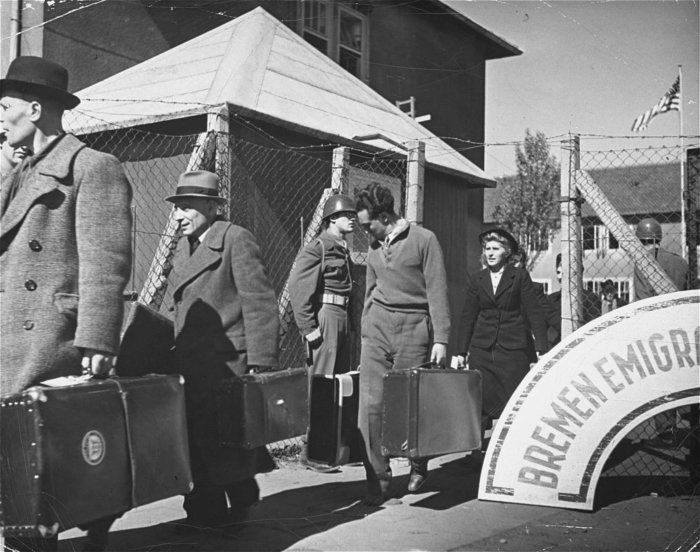Now in the Online Archive: passenger lists

After Hitler’s regime was defeated, a large number of Holocaust survivors and liberated forced laborers wanted to leave Europe. Alongside America, the most desirable emigration destinations were Canada and Australia. Who was able to find a new home overseas? When did they leave, and what ships took them away from a Europe lying in ruins? To help family members answer these questions quickly and easily, the Arolsen Archives have worked with Ancestry to publish ships’ passenger lists online. These provide information on around 1.9 million people who either did not want to return to their home countries after 1945 or were not able to do so.
“I arrived in New York on 4 December 1951. That December date was a fateful one for me. A new life was about to begin, and an old one had been left behind,” Thomas Buergenthal writes in his biography. He had to spend his childhood in a ghetto and two concentration camps. As a 17-year-old, the General A. W. Greely brought him to America. This military ship alone took a total of over 14,000 emigrants to the USA.

»The passenger lists are a priceless historical source. They are recognized as documentary heritage by UNESCO and give us insights into the lives of individuals. They also provide information about migration in the wake of World War II, such as details about which groups were able to emigrate and who was denied this opportunity.«
Floriane Azoulay, Director of the Arolsen Archives
Most of the emigrants were carried by the nearly 400 ships that the Allies had supplied for this mass migration movement; some even arrived by plane. All of them are registered on the lists that can now be searched online.
Partnership with Ancestry
The passenger lists are among the more than 30 million documents held by the Arolsen Archives, the world’s most comprehensive archive on victims of Nazi persecution. The international institution aims to publish all documents online by the year 2025, offering extensive research opportunities. “We need strong partners for this,” Floriane Azoulay explains. “It would take too long using our resources alone, so we are very pleased about this new collaboration.”
Thanks to the partnership with this major online platform for genealogical research, the passenger lists can now be accessed by a large international audience, as Ancestry has over three million users and is available in more than 30 countries. The company also has the means to index large collections quickly and in high quality. Ancestry has tagged the digitized passenger lists with keywords such as names or dates so that they can be searched more quickly and precisely on the internet.


Left: Arrival of the “SS Ernie Pyle” with Jewish emigrants from Europe at the port of New York on January 2, 1947.
Photo Credit: United States Holocaust Memorial Museum, courtesy of Sally Goldblum Wasserman
Below: Displaced Persons departing Germany for the United States enter the gates of a former navy yard that was use as a staging area for emigrants leaving Europe through the port of Bremerhaven.
Photo Credit: United States Holocaust Memorial Museum, courtesy of Aviva Kempner
Publication on two portals
Within the scope of this partnership, the lists will be published online by both the Arolsen Archives and Ancestry. Access to these documents is provided free of charge by both partners. “Through Ancestry, we can make these documents available to a wide audience. After all, many families searching for their roots are not familiar with our archive,” Floriane Azoulay says.
The Arolsen Archives began uploading their collections online in 2015 and most recently published 13 million documents from concentration camps in a new, modern online archive in May 2019. It will gradually become possible to trace the fates of individuals such as Thomas Buergenthal and thus keep alive the memory of the Nazi victims. His life story shows that, in many cases, emigration and admission to the USA led to a successful fresh start. The today 85-year-old Buergenthal became a judge with a focus on human rights. He actively campaigns to preserve knowledge about the Nazi period and its effects on many millions of people.
About the Arolsen Archives
The Arolsen Archives are an international center on Nazi persecution with the world’s most comprehensive archive on the victims and survivors of National Socialism. The collection has information on about 17.5 million people and belongs to UNESCO’s Memory of the World. It contains documents on the various victim groups targeted by the Nazi regime and is an important source of knowledge for society today.

